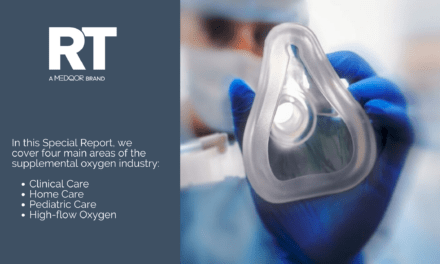 |
When patients are admitted to the hospital, they have been placed in the same risk category as bungee jumping and mountain climbing. Compare that to commercial aviation, an industry that is considered “ultra-safe.”1 Why is health care’s error rate so much higher?
WHAT IS THE HUMAN COST?
In 2000, the Institute of Medicine (IOM) published a landmark report, To Err Is Human,2 which is often quoted as a statement of the patient-safety crisis in the United States. Medical errors cost the United States more than $37 billion per year. The IOM suggests that 44,000 to 98,000 Americans die each year from medical errors. This number of deaths is equivalent to a jet airliner crashing every day.
Would anyone fly on a commercial airliner with this safety record? Why has the public not been made aware of the patient-safety crisis? Hospitals are risky businesses with unique challenges and horrific consequences for failure. We entrust our family members to these caring professionals and hope for the best, but human error can lead to dire consequences. This is not just a problem in the United States. The Canadian Patient Safety Institute calls health care “A service industry that injured 7.5% of its customers through preventable errors (30% of injuries resulting in permanent impairment; 5% to 10% resulting in death).”
The United States is in the middle of a physician and nurse shortage. By 2020, the United States will need an additional 340,000 to 1 million nurses. J. Edward Hill, MD, former president of the American Medical Association, compares the looming physician shortage to a pandemic.
The job of the hospital administrator is tough and about to get even tougher. Medicare issued rules in August 2007 that will end payments for the extra care required for certain medical mistakes. The new rules prohibit passing these charges on to patients, so hospitals will bear the costs.
Finance is important: The hospital must be financially viable to provide health care. But isn’t the mission of the hospital to provide that health care put in jeopardy if patient safety isn’t as critical as finance? If hospitals are meeting financial goals but endangering patients in the very process of delivering their services, isn’t that the very antithesis of their purpose? Moreover, doesn’t patient safety have a huge financial impact on the hospital? The legal profession thinks so.
The differences in the attitudes of aviation and health care professionals are dramatic. One study compared the responses of more than 31,000 pilots, surgeons, and nurses. When asked, “Do you make mistakes?” 100% of the pilots answered in the affirmative, whereas only 30% of the health care professionals responded that they made mistakes.3
The safest hospitals all have one key element in common: The hospital administrator is the key to a safe hospital environment. All hospital administrators make it their avowed number-one priority to provide high-quality health care. How, then, can there be such a disparity in attention to patient safety? It happens when priorities get distorted. Many in health care are using “aviation level safety culture” to create a safer health care environment.
LEARNING FROM COMMERCIAL AVIATION
Medical device companies are taking lessons on safety from commercial aviation. Some companies are making a difference by creating an “aviation level safety culture”—a culture that demands a standard of excellence and a level of automation that lowers human error.
Medical devices that maintain the “aviation level safety” offer the clinician tools that reduce their workload and improve situational awareness. These tools include self-regulating “autopilots”—intelligent features that protect the patient at all times. Forward-thinking companies also promote education with the assistance of realistic simulations and scenario-based training designed to reduce human error, just like the training airline pilots receive.
Mechanical ventilators are designed to sustain life. These are some of the most complex and important medical devices in the modern ICU, yet there is a “dirty secret”—ventilator induced lung injury (VILI), a preventable consequence of mechanical ventilation. “Aviation level safety” addresses this problem and marks a new standard in respiratory care by using technologies proven effective in commercial aviation that promise to eliminate patient harm due to mechanical ventilation.
Humans will always make errors, but safe systems protect the patients that we all serve. Arthur Bloomfield, MD, said it best, “There are some patients we cannot help, there are none we cannot harm.”
“Our systems are too complex to expect merely extraordinary people to perform perfectly 100% of the time. We as leaders have a responsibility to put in place systems to support safe practice,” says James Conway, Institute for Healthcare Improvement Senior Fellow and former executive vice president and COO, Dana-Farber Cancer Institute. Patients and their families must take the time to learn about patient safety. Encourage your patients to ask questions about technology and medications. Tell them not to be afraid to request a “time out” if something is happening that does not make sense. If a patient is on a mechanical ventilator, the family should ensure that it meets the new “aviation level” of safety.
(Author’s note: Please take a moment to participate in a survey. Here is the link: www.aviationlevelpatientsafety.com. You will receive a free report on patient safety in critical care medicine.)
David Costa is vice president of a large medical device manufacturing firm in the western United States. He is a former commercial airline pilot who lectures worldwide on patient safety from this unique perspective. For further information, contact [email protected].
References
- Amalberti R, Auroy Y, Berwick D, Barach P. Five system barriers to achieving ultra safe health care. Ann Intern Med. 2005;142:756-64.
- Kohn LT, Donaldson MS. In: Committee of Quality of Health Care in America, eds. To Err Is Human. [removed]www.nap.edu/catalogphp?record_id=9728#toc[/removed]. Accessed February 14, 2008.
- Sexton JB, Thomas EJ, Helmreich RL. Error, stress and teamwork in medicine and aviation: cross sectional surveys. BMJ. 2000;320:745-9.










